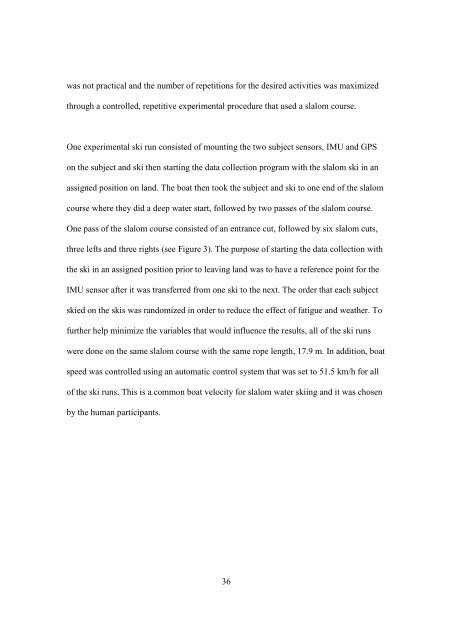Biomechanical P ... Slalom Water Skiing R1.pdf - Atrium - University ...
Biomechanical P ... Slalom Water Skiing R1.pdf - Atrium - University ...
Biomechanical P ... Slalom Water Skiing R1.pdf - Atrium - University ...
- No tags were found...
You also want an ePaper? Increase the reach of your titles
YUMPU automatically turns print PDFs into web optimized ePapers that Google loves.
was not practical and the number of repetitions for the desired activities was maximizedthrough a controlled, repetitive experimental procedure that used a slalom course.One experimental ski run consisted of mounting the two subject sensors, IMU and GPSon the subject and ski then starting the data collection program with the slalom ski in anassigned position on land. The boat then took the subject and ski to one end of the slalomcourse where they did a deep water start, followed by two passes of the slalom course.One pass of the slalom course consisted of an entrance cut, followed by six slalom cuts,three lefts and three rights (see Figure 3). The purpose of starting the data collection withthe ski in an assigned position prior to leaving land was to have a reference point for theIMU sensor after it was transferred from one ski to the next. The order that each subjectskied on the skis was randomized in order to reduce the effect of fatigue and weather. Tofurther help minimize the variables that would influence the results, all of the ski runswere done on the same slalom course with the same rope length, 17.9 m. In addition, boatspeed was controlled using an automatic control system that was set to 51.5 km/h for allof the ski runs. This is a common boat velocity for slalom water skiing and it was chosenby the human participants.36
















